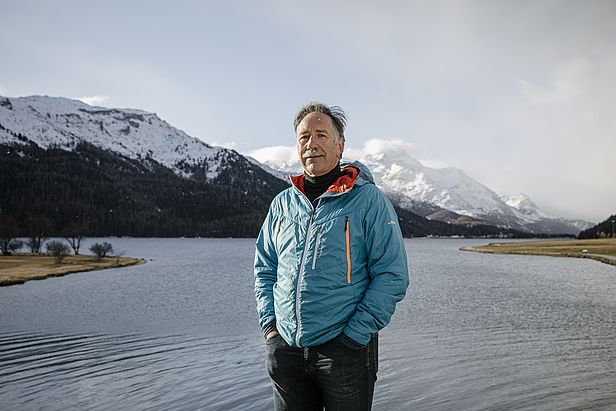09.12.2020 | Observer portraits
- Married with two adult children
- A former forester, now working in an engineering office and as a self-employed avalanche service consultant in the Upper Engadine
- SLF observer since 2017
As an observer, what is it exactly that you report?
I am a regional observer; my reports span the entire Upper Engadine. One of my regular tasks is to produce snow profiles on a slope in the field.
How did you become an SLF observer?
For a long time before I became an observer, I was frequently reporting assessments and observations to the SLF. Then the Avalanche Warning Service asked if I would like to file official reports as an observer.
What do you like about this task?
I enjoy the close collaboration with the Avalanche Warning Service. There are rewards for both parties. On the one hand, the service benefits from my observations, and on the other, I am better informed because of the close contact we have. This lively interaction is also useful in the work I perform for the avalanche service.
Which aspects are less enjoyable/do you find tiresome?
Things become difficult when we have a critical avalanche situation here in the Upper Engadine. That's when I have a huge workload with the avalanche service. Continuing to file reports with the SLF at such times is a big challenge. But reverse situations can be difficult as well. A high-pressure weather system lasting for weeks on end is also tiresome because then there is little to report.
What does it mean to you to be an observer?
I associate a certain amount of pride with the job. I am proud to be part of the team and to play a useful role.
How easy is it to combine this task with your other work?
It's very easy. I undertake evaluations for the avalanche service every day, for clients such as the civil engineering authority or the Rhaetian Railway. The additional work I perform as an observer requires relatively little input.
What has been your most memorable experience relating to snow and avalanches?
There was one winter, six or seven years ago, when we had extreme amounts of snow for a long period. The highest values previously recorded in the measurement series were far exceeded. It was a very challenging time for me because I knew what was coming next. In view of the enormous quantities of snow, even large-sized avalanches were a distinct possibility. There's no call for panic in such situations of course, but decisions have to be taken, such as whether or not a road needs to be closed. Fortunately, there were no very large avalanches, but the potential certainly existed.
What is the personal connection between you and snow?
I'm fascinated by the substance and the way in which it continuously changes. No sooner is one aspect understood than new topics arise. I expect the phenomenon of gliding avalanches will continue to hold much of our attention for the next few years.
How do you like to spend your evenings/leisure time?
In wintertime my pastimes include giving skiing lessons, as well as downhill and backcountry skiing. In the summer I enjoy cycling and sailing. My favourite haunt is Lake Como because it's a lot warmer there than here in the Engadine.
Which is your favourite place in the world?
In these parts it has to be Muottas Muragl – a gorgeous region. The views are simply spectacular. It's a great feeling up there on the summit, and I enjoy observing the landscape.
And your favourite season?
I like all of the seasons and the infinite recurrence of nature's rhythms. I wouldn't want to live in the Tropics or anywhere like that.
Is there anything you couldn't live without?
My family and nature are paramount. All the things I like doing take place outdoors.
The SLF is celebrating the 75th anniversary of the avalanche bulletin. What does that mean to you?
That means a lot to me. As an institution, the SLF has been instrumental in enabling people to live as safely as possible in the mountains and in fostering tourism there as well.
